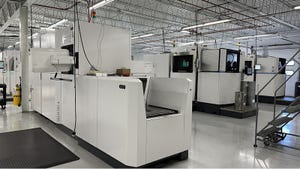August 18, 2010

Plastics made from chicken feathers are becoming acommercial reality in the U.S.
A Virginia company called Eastern Bioplastics is pitchingkeratin plastic made from chicken feathers as a replacement for polyethylene orpolypropylene. Products manufactured with these resins break down into carbondioxide and water when placed in environmental conditions.
Chicken Feathers Emerge as Plastic Feedstock_B |
They will compete against bioplastics such as thermoplasticstarch for disposable utensils and packaging. The keratin fiber is both highlymicrocrystalline and very resistant to both mechanical and thermal stress,making it quite different from other bioplastics.
Separately, The American Nursery & Landscape Assn. andits Horticultural Research Institute (HRI) are exploring the use of keratinpolymer derived from poultry feathers for plant containers.
The impetus for both projects was research sponsored by theU.S. Dept. of Agriculture to find commercial uses for waste chicken feathers.
In 1998, the USDA's Agricultural Research Service publishedits first story about chemist Walter Schmidt'sresearch to turn chicken feather fiber into plastics in the EnvironmentalManagement and Byproduct Utilization Lab. in Beltsville, MD. In collaborationwith the HRI, Schmidt and HRI research associate Masud Huda formulated plantingpots that degrade over one to five years.
Chicken Feathers Emerge as Plastic Feedstock_A |
Justin Barone, a research associate working with Schmidt,found that plastics based on the feathers plastic can be molded. In 2006, theprocess of making composites and films from feather keratin was patented byARS.
Barone later became the R&D Engineer for Eastern Bioplastics, which alsomakes composites in which a percentage of keratin material is blended (up to 40percent) with traditional petroleum plastics.
In February 2010, Eastern Bioplastics opened a pilotcommercial plant in Mount Crawford, VA. In addition to supplying resin, the companyalso offers molding with four injection molding machines ranging from 44 to 220tons of clamping force and shot sizes up to 21.4 oz.
K. Marc Teffeau, who also worked with Schmidt, is researchdirector at HRI, and is in the process of creating a company that will licensekeratin formulations to toll compounders. The pots would combine the keratinresin with polyolefins.
U.S. farmers produce about 5 billion lb of chicken feathersannually. The primary commercial end product today is feather meal, but thegreat majority is landfilled. As an alternative, the feathers could be pulverized,heated, and mixed with plasticizer, creating a plastic resin.
The potential supply of resin made from chicken featherswould still be a drop in the bucket - less than 10 million lb a year. Totalresin production in North America last year approached 100 billion lb,according to a reportfrom BCC Research.
About the Author(s)
You May Also Like







